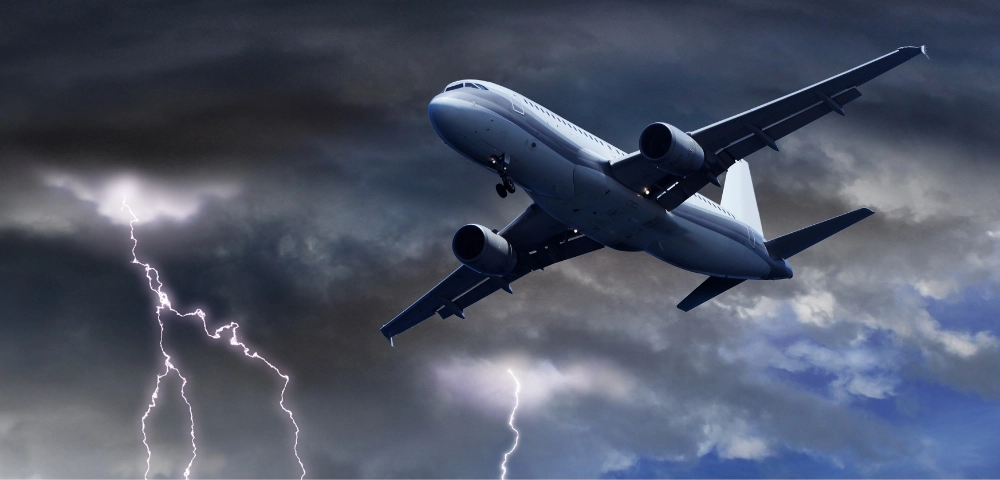Extreme Turbulence On Amsterdam-Bound Flight Hospitalizes Passengers
Everyone who's flown has experienced it; the harsh wind flowing against the hull of the plane, the shaking, the sputtering of the plane engine. At the very least, turbulence is a mildly uncomfortable experience.
However, for the passengers of a U.S. Delta Airlines flight turbulence went beyond just being a mild disturbance. 25 passengers were sent to hospital following extreme turbulence on a flight bound for Amsterdam on July 29th, 2025. The turbulence was so severe that service carts and unbuckled passengers were slammed against the ceiling of the plane.
While the passengers' refusal to follow rules regarding wearing seatbelts can cause safety issues for both themselves and other passengers, turbulence at this level is exceedingly abnormal. Regardless of how the injuries occurred, everyone on board during that period was exposed to serious risk.

The Types Of Turbulence
While we’ve explored how turbulence can impact day-to-day travellers, it’s important to have a basic grasp on the types of turbulence, and what turbulence is.
Thermal/Convective Turbulence
During summer afternoons, the ground heats to its daily maximum. In humid conditions, warm, moist air rises rapidly, generating turbulence in the atmospheric column.
Orographic Turbulence
Orographic turbulence occurs when wind speed and direction changes over obstacles like mountains, buildings, or trees. It is most common near the surface and intensifies with greater terrain roughness—an important consideration for airport siting.
Clear Air Turbulence (CAT)
CAT usually develops in clear skies at high altitudes, especially near jet streams around the 200 hPa level. These fast-flowing wind bands, exceeding 50 knots, produce severe turbulence through strong wind shear along their edges.
Mountain Wave Turbulence
Mountain wave turbulence arises from atmospheric waves generated as wind flows over mountain ranges. These waves can break on the lee side of the ridge, creating turbulent zones downwind.
Wake Turbulence
Wake turbulence results from the vortices trailing an aircraft, posing hazards during takeoff and landing, particularly behind large jets. Similarly, wind turbines create wake turbulence downstream of their rotors, which can reduce the performance of nearby turbines.
How to Combat Turbulence
While turbulence is a problem for airlines, it is completely reliant on weather patterns. Airlines can minimize risk by utilizing predictive systems, especially timely, accurate and hyper-local weather forecasting systems. By utilizing effective weather forecasts and Early Warning Systems, aviation professionals can adjust flight routes, altitude and warnings to passengers accordingly.






